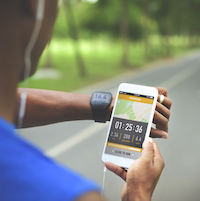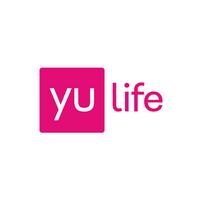Three ways that digital health will shake up employees’ wellbeing experience in the future

While the past year has fundamentally altered how we live, it has also permanently shifted the way that we think, particularly about our health and wellness and how it interweaves with the digital tools we interact with every day.
The pandemic has accelerated many aspects of the future of health that might otherwise have taken years, exposing a broad need for digital enablement and health systems that are more fluid and resilient in the face of disruption.
So, what trends are expected to take hold in 2021 and beyond? And how can businesses start incorporating these into their employee wellbeing strategies in order to foster a healthier, happier workforce?
Here are three of the emerging trends in digital health you should know about if you want to make sure your employee wellbeing remains ahead of the curve.
1. A preventative approach
As the rise of technology sees healthcare move away from the hospital and into people’s homes, we are entering an age of preventative care, where digital tools are empowering people to build more personalised forms of intervention for physical and mental health conditions.
Health innovators are focused on new approaches that put people directly in control of their health - giving them the power to take care of themselves as opposed to seeking medical help only when something goes wrong. This can be done by providing individuals with the tools and motivation to make informed healthy choices.
For businesses, adopting a preventative approach to employee health brings extensive benefits. While workers experience more comprehensive care, employers maintain a healthier workforce - reducing cases of prolonged sickness and absence whilst significantly boosting overall productivity. Encouraging employees to practice micro-habits such as short walks can add up over time to give a significant boost to health and wellbeing.
When implementing these trends, the addition of incentives and rewards are a great way to motivate user participation. YuLife's Employee Health & Wellbeing Survey found that 34% of people said they would do more than two hours of extra physical activity per week if they were rewarded for it.
2. Mental and physical fitness apps
As much of the physical world was put on hold by the pandemic, digital wellness saw an explosive uptake. As people experienced a desire to better manage their daily lives in the face of the virus, the use of tech to manage personal wellbeing surged.
The wellness market has adjusted quickly to meet the spike in demand. YuLife's Employee Health & Wellbeing Survey also found a 28% increase in people downloading wellness apps. Additionally, the mindfulness app Headspace has seen a 19x jump in users completing a calming meditation exercise.
As the pursuit of innovative ways to keep employees engaged in wellbeing grows, the roll out of subscriptions to mindfulness and fitness meditation apps appears to be the next mega-trend set to transform the workplace.
3. Making health social
Lockdown and its resulting limitations on social interaction have placed greater emphasis on the ways and extent to which people use smart devices on a daily basis, with many increasingly relying on social media platforms to maintain a sense of human connection.
Social media and healthcare are a powerful combination. More and more digital innovators are developing health and wellbeing tools that bridge the gap between being fun to use and helping people to achieve their goals.
Incorporating social networking and gamification into healthcare, particularly in the workplace, not only encourages employees to engage more with health-promoting activities but also facilitates team bonding.
This article is provided by YuLife.
Supplied by REBA Associate Member, YuLife
YuLife is the first digital life insurance provider on a mission to inspire life.







